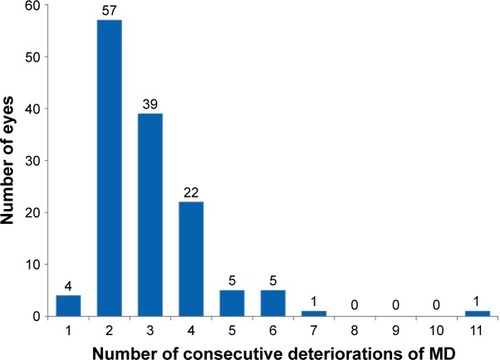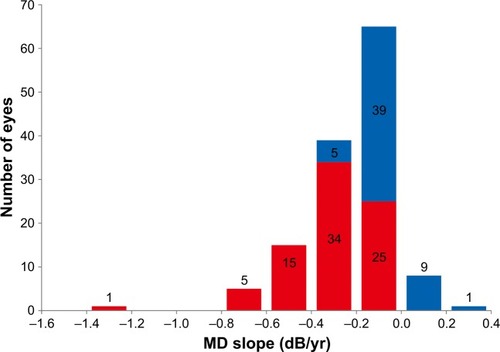Figures & data
Table 1 Patient characteristics, IOP data, and visual field data
Figure 1 Distribution of number of eyes in which consecutive decrease in MD value was observed.
Abbreviation: MD, mean deviation.

Figure 2 Distribution of number of eyes with MD slope value at the final visual field test.
Abbreviation: MD, mean deviation.

Table 2 Results of trend analysis and univariate logistic regression analysis
Table 3 Comparison of variables between groups with and without MD slope deterioration
Table 4 Results of multivariate logistic regression analysis
